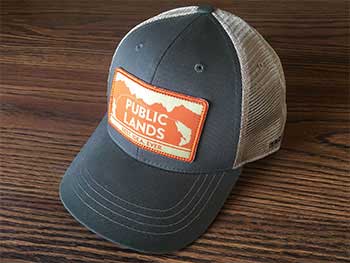Where
The White Mountain National Forest comprises more than 750,000 acres in the eastern New Hampshire counties of Grafton, Coos and Carroll with a small portion of the forest extending into Maine. The forest includes over 100 miles of the Appalachian Trail, 48 peaks more than 4,000 feet in elevation (including Mt. Washington, the northeast’s highest mountain at 6,288 feet), a number of downhill ski areas and 600 miles of rivers and streams … many of which hold native brook trout.
White Mountain National Forest
Why
The joys of hiking into remote mountain streams to fish for willing native brookies.
“The forest has so many places where you can pull off a forest road, hike in a few minutes (or more, if you wish) and find streams with brookies,” said Joe Norton, Trout Unlimited’s Project Manager for Upper Connecticut Home Rivers Initiative. “This is true along the Kancamagus Scenic Highway, the Kilkenny area and the Pemigewasset area. The fish won’t be whoppers – most will be 6 inches to 8 inches, with a rare fish measuring 12 inches or 14 inches – but the streams are beautiful, and it’s really fun fishing.”
Some of the larger rivers just outside the forest are stocked with browns and rainbows, which typically run larger. The White Mountain National Forest is also popular with hunters, especially those seeking ruffed grouse (particularly in the Pittsburg area) and white-tail deer. Moose can also be hunted if you’re lucky enough to draw one of roughly 50 permits. Downhill skiers know the region for some of the east’s best-known resorts, including Waterville Valley, Loon Mountain and the off-piste, hike-to-the-top-and-ski-down challenge of Tuckerman’s Ravine.
The forest has so many places where you can pull off a forest road, hike in a few minutes (or more, if you wish) and find streams with brookies.
Joe NortonTU Initiatives
Although many of the region’s mountains streams have habitat characteristics of excellent coldwater fisheries, a significant number are fragmented by dams and poorly designed culverts, limiting fish migration. TU has partnered with the Connecticut River Watershed Council, the New Hampshire Charitable Foundation and U.S. Forest Service to identify and complete a number of restoration projects to enhance fish movement. Thus far, these have included four bridge replacements on the East Branch of the Pemigewasset River; restoration work on ten high productivity headwater streams in the Kilkenny area; and the decommissioning of Tunnel Brook Road (and rebuilding of habitat features).
Support public lands and look good doing it!

Make a Difference
A dollar spent on conservation is a dollar spent for the benefit of future generations. But recent budget proposals put that future at risk. Visit standup.tu.org to send a message to Congress, telling them you support funding for public land management and agencies like the U.S. Forest Service.

